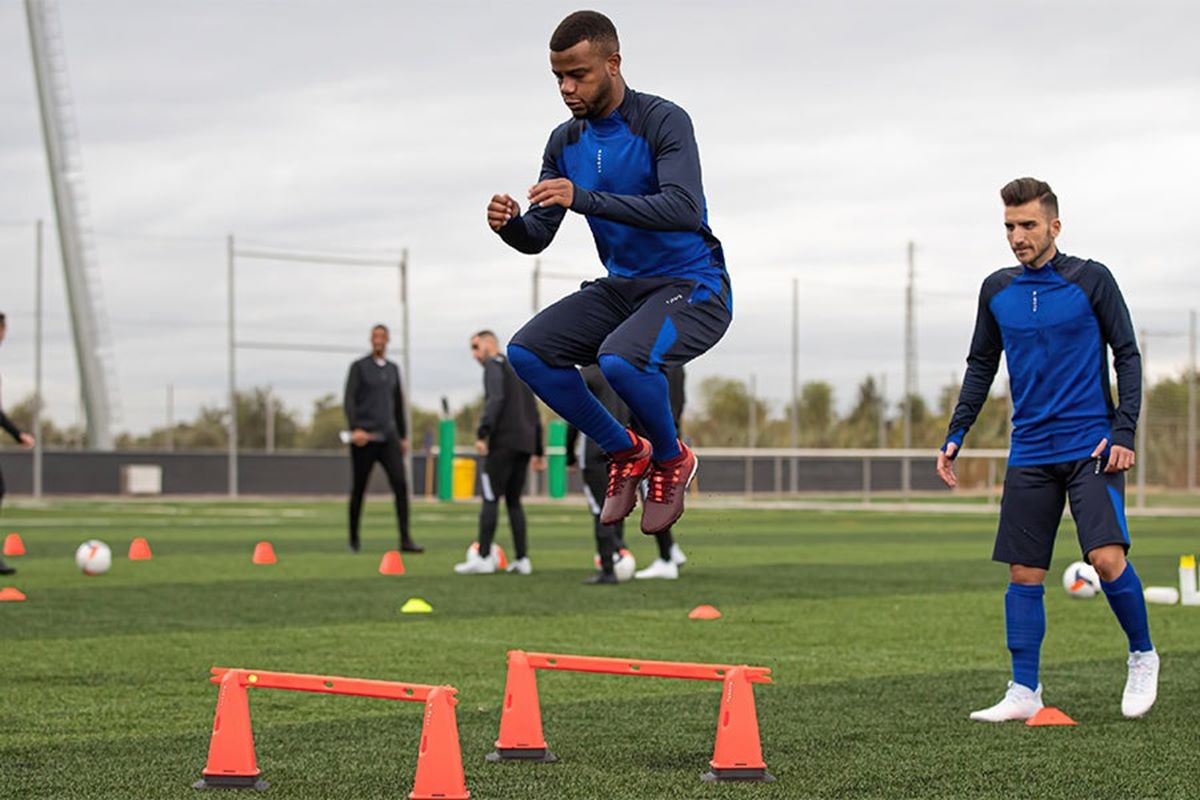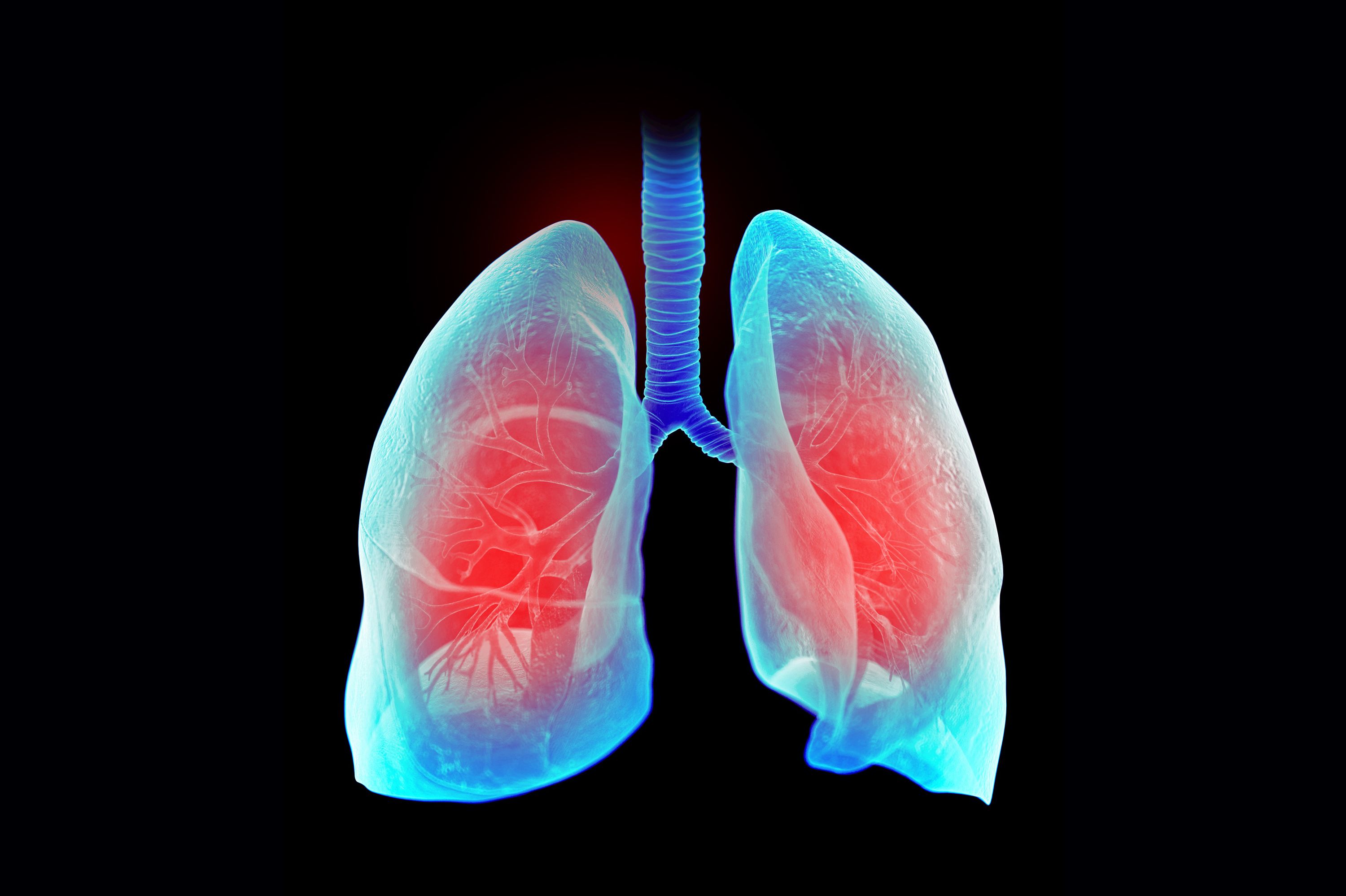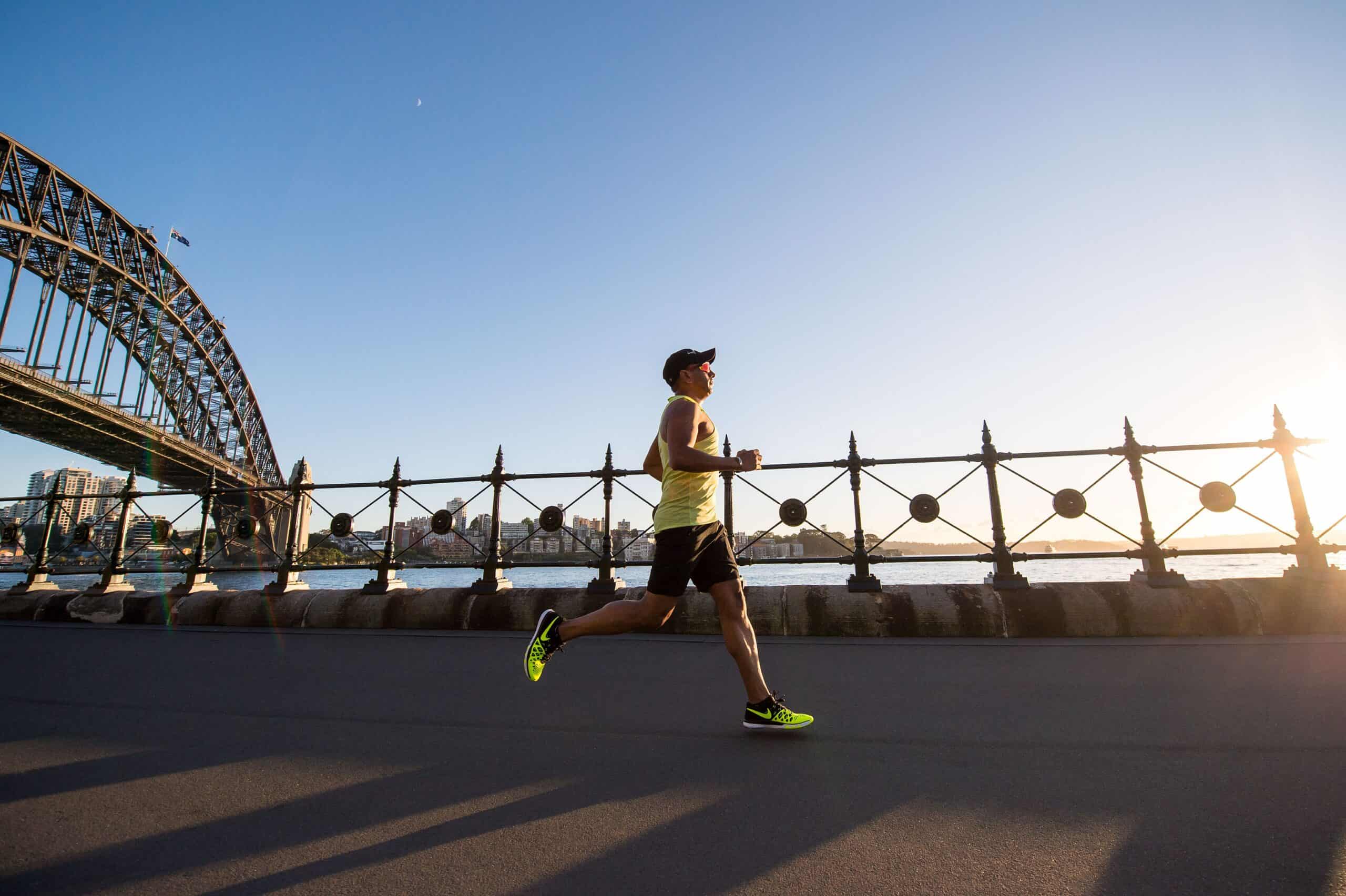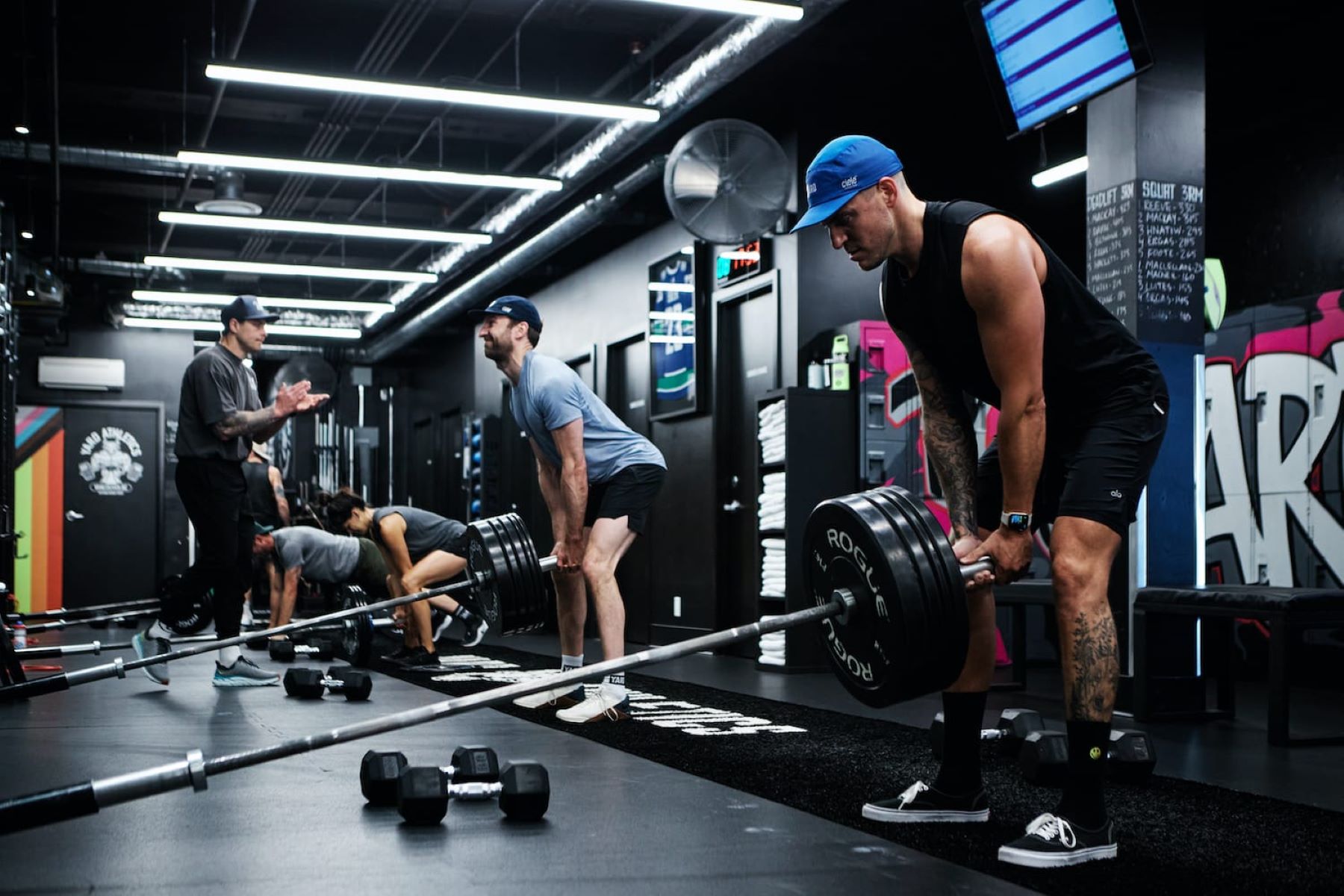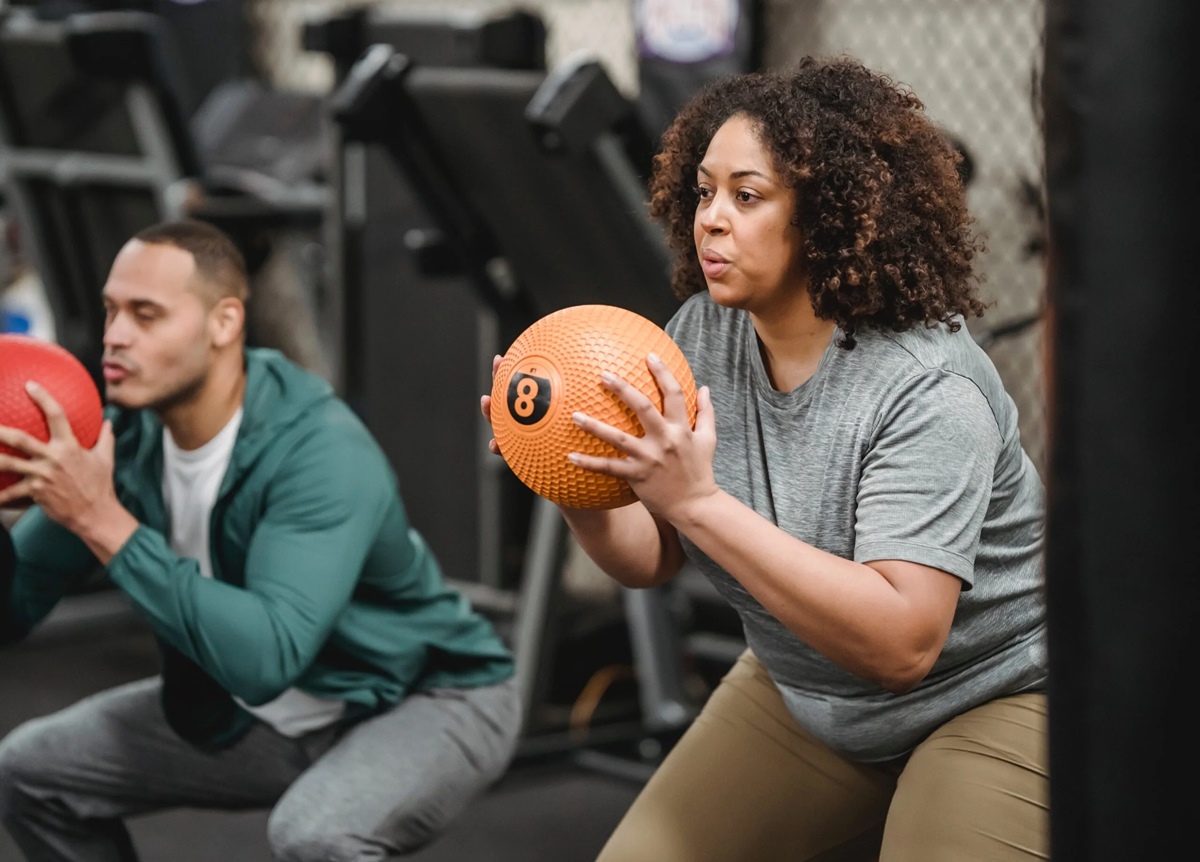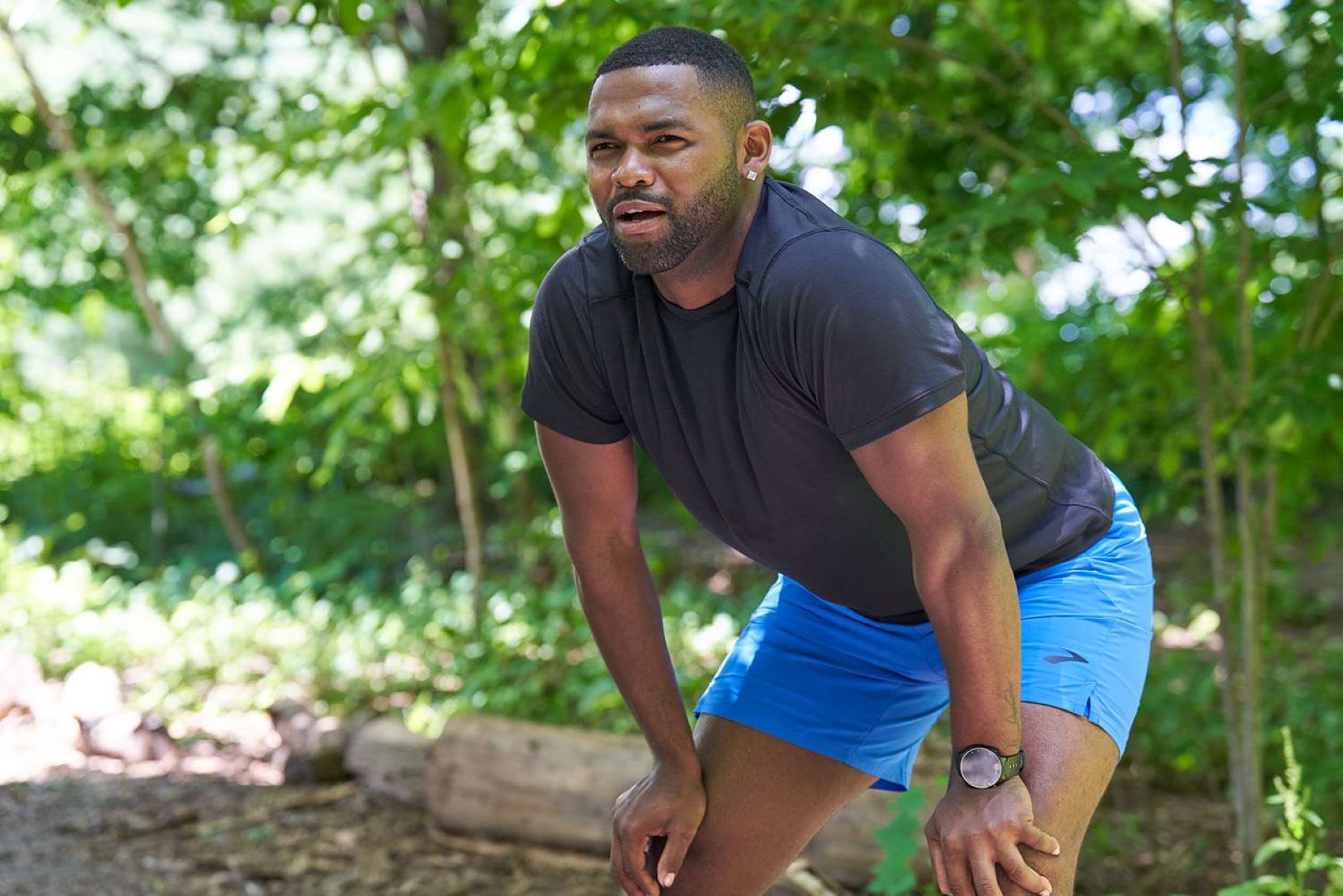

Featured
How To Recover Quickly From A Workout
Modified: January 2, 2024
Learn the best ways to recover quickly from your workout to maximize your results. Read this featured article for expert tips and techniques.
Introduction
Welcome to the world of fitness! Whether you are a seasoned athlete or just getting started on your fitness journey, one thing is certain – workouts can take a toll on your body. It’s not just about the sweat and effort you put in during the exercise, but also the recovery phase that follows. Recovery is an essential component of any fitness program, as it allows your body to repair, replenish, and adapt to the demands placed upon it.
While many people focus solely on their workout routines, neglecting the recovery process can hinder progress and increase the risk of injury. Understanding the importance of recovery and adopting effective strategies can help you bounce back quickly, allowing you to maintain consistency and achieve your fitness goals.
In this article, we will explore various techniques and practices that can aid in your post-workout recovery. From nutrition to hydration, rest to active recovery, and supplementation to listening to your body, we will cover it all. So, let us dive in and discover how you can recover quickly and optimize your fitness journey.
Importance of Recovery after a Workout
Recovery is not just a luxury – it is a necessity. After a strenuous workout, your body undergoes various physiological changes that need to be addressed for optimal performance and overall well-being. Here are some key reasons why recovery is essential:
- Muscle Repair and Growth: During exercise, your muscles experience microscopic damage. Taking time to recover allows your body to repair this damage and build stronger muscles. Without proper recovery, this process is hindered, leading to muscle fatigue, decreased performance, and increased risk of injury.
- Prevention of Overtraining: Overtraining is a common pitfall that can result in decreased performance, chronic fatigue, and increased susceptibility to illness. Giving your body adequate time to rest and recover helps prevent overtraining, ensuring that you can sustain a consistent and effective workout routine.
- Energy Restoration: Exercise depletes your energy stores in the form of glycogen. Recovery time allows your body to replenish these stores so that you have the energy needed for future workouts. Without sufficient recovery, you may feel consistently fatigued, making it difficult to maintain a high level of performance.
- Injury Prevention: Working out puts stress on your muscles, joints, and connective tissues. Recovery time helps reduce the risk of injuries by allowing these structures to heal and adapt to the demands of exercise. Ignoring recovery can lead to overuse injuries, such as tendonitis or stress fractures, which can derail your fitness progress.
- Mental Refreshment: Exercise has not only physical but also mental demands. Recovery provides a break from the mental strain of workouts, allowing you to recharge and maintain a positive mindset. It helps prevent burnout and keeps you motivated to continue your fitness journey.
Understanding the importance of recovery sets the foundation for a successful and sustainable fitness routine. By prioritizing recovery, you can optimize your performance, prevent injuries, and enjoy the long-term benefits of exercise.
Nutrition for Quick Recovery
Proper nutrition plays a crucial role in post-workout recovery. It provides the essential nutrients your body requires to repair and replenish itself. Here are some key nutrition tips to aid in quick recovery:
- Protein: Consuming an adequate amount of protein is crucial for muscle repair and growth. Include high-quality protein sources such as lean meats, eggs, fish, dairy products, legumes, and tofu in your post-workout meals. Aim for approximately 20-30 grams of protein per meal to provide your muscles with the building blocks they need.
- Carbohydrates: Carbohydrates are your body’s primary source of energy. After a workout, your glycogen stores are depleted. Consuming carbohydrates helps replenish these stores and provides energy for muscle recovery. Opt for complex carbohydrates like whole grains, fruits, and vegetables to fuel your body effectively.
- Healthy Fats: Incorporating healthy fats into your post-workout meals helps reduce inflammation and aids in nutrient absorption. Include sources such as avocados, nuts, seeds, and olive oil in your diet. However, be mindful of portion sizes, as fats are calorie-dense.
- Hydration: Staying hydrated is essential for proper recovery. Water assists in nutrient transport, toxin elimination, and maintaining optimal body temperature. Drink water before, during, and after your workouts, and consider consuming electrolyte-rich fluids, like coconut water or sports drinks, if you sweat excessively.
- Antioxidant-Rich Foods: Integrate antioxidant-rich foods into your diet, as they help combat oxidative stress caused by intense workouts. Include colorful fruits and vegetables like berries, citrus fruits, leafy greens, and bell peppers. These foods provide vitamins, minerals, and phytochemicals that support recovery and overall health.
- Timing: Timely consumption of post-workout meals is crucial for maximizing recovery benefits. Aim to eat a balanced meal or snack containing protein and carbohydrates within 30 minutes to two hours after exercising. This window of time, known as the “anabolic window,” allows your body to efficiently utilize nutrients for recovery.
By fueling your body with the right nutrients, you provide it with the necessary building blocks to repair and recover from your workouts, enabling you to bounce back quickly and continue making steady progress towards your fitness goals.
Hydration and Fluid Replacement
Proper hydration is essential for optimal performance and post-workout recovery. When you exercise, you lose fluids through sweat, and it’s crucial to replenish those fluids to maintain hydration levels. Here are some important points to consider for effective hydration and fluid replacement:
- Water Intake: Regularly drinking water throughout the day is vital for staying hydrated. Aim to drink at least 8 cups (64 ounces) of water daily, and increase your intake during and after workouts to compensate for the fluid loss.
- Electrolytes: In addition to water, replenishing electrolytes lost through sweat is crucial. Electrolytes such as sodium, potassium, magnesium, and calcium play key roles in maintaining fluid balance and muscle function. Consume electrolyte-rich foods like bananas, coconut water, or consider adding electrolyte supplements to your routine, especially during intense or prolonged workouts.
- Monitoring Urine Color: An easy way to assess hydration levels is by monitoring the color of your urine. Light yellow or pale urine indicates proper hydration, while dark yellow or amber colors suggest dehydration. Aim for a pale yellow color as an indicator of adequate fluid intake.
- Pre- and Post-Workout Hydration: Prior to exercise, drink 16-20 ounces of water 2-3 hours before your workout and an additional 8-10 ounces about 15 minutes before. After your workout, replenish fluids by drinking 16-24 ounces of water for every pound lost during exercise.
- Hydration during Exercise: Depending on the duration and intensity of your workout, aim to consume 7-10 ounces of water or sports drinks every 10-20 minutes during exercise. This helps maintain hydration levels and replace fluids lost through sweat.
- Individual Hydration Needs: It’s important to note that hydration needs vary from person to person. Factors such as body weight, sweat rate, and environmental conditions influence individual fluid requirements. Pay attention to your body’s signals and adjust your hydration strategies accordingly.
Hydration plays a crucial role in regulating body temperature, delivering nutrients to cells, and removing waste products. By prioritizing hydration and incorporating fluid replacement strategies, you can optimize your recovery and ensure that your body functions efficiently during workouts.
Rest and Sleep
Rest and sleep are often undervalued components of post-workout recovery. Your body needs adequate time to rest, repair, and rejuvenate. Here are some important considerations for prioritizing rest and optimizing sleep for effective recovery:
- Rest Days: Incorporating regular rest days into your workout routine is essential. Taking a day off from intense exercise allows your muscles and connective tissues to recover and reduces the risk of overuse injuries. Use rest days for active recovery activities like gentle stretching, yoga, or walking.
- Sleep Quality and Duration: Aim for 7-9 hours of quality sleep each night. During sleep, your body releases growth hormone, which aids in tissue repair and muscle growth. Quality sleep also benefits your immune system, cognitive function, and overall well-being.
- Bedtime Routine: Establishing a relaxing bedtime routine can help signal to your body that it’s time to unwind and prepare for sleep. Create a calming environment, limit exposure to electronic devices before bed, and engage in activities such as reading, journaling, or practicing relaxation techniques like deep breathing or meditation.
- Consistent Sleep Schedule: Try to stick to a consistent sleep schedule, going to bed and waking up at the same time each day. This helps regulate your body’s internal clock and promotes better sleep quality.
- Avoid Stimulants: Limit the consumption of stimulants such as caffeine and nicotine, especially in the evening. These substances can interfere with your ability to fall asleep and may disrupt the quality of your sleep.
- Optimize Sleep Environment: Create a sleep-friendly environment by making your bedroom dark, quiet, and cool. Invest in a comfortable mattress and pillows that support good sleep posture.
- Address Sleep Issues: If you consistently struggle with sleep problems, such as insomnia or sleep apnea, consider seeking guidance from a healthcare professional. They can help identify and address any underlying conditions and provide strategies to improve your sleep quality.
Rest and quality sleep are integral parts of the recovery process. By ensuring sufficient rest and optimizing your sleep habits, you allow your body to recharge, repair, and maximize the benefits of your workouts.
Active Recovery Techniques
Active recovery refers to engaging in low-intensity activities that promote blood flow, flexibility, and overall recovery without causing additional stress on the body. Incorporating active recovery techniques can help reduce muscle soreness, improve circulation, and aid in the removal of metabolic waste products. Here are some effective active recovery techniques to consider:
- Light Cardio: Engage in low-impact cardiovascular exercises such as walking, swimming, or cycling at a comfortable pace. This gentle movement increases blood flow, promoting nutrient delivery to your muscles and aiding in the removal of waste products.
- Yoga or Stretching: Partake in gentle yoga or stretching routines to improve flexibility, release tension, and promote relaxation. Focus on stretching major muscle groups, paying attention to areas of tightness or soreness.
- Massage or Foam Rolling: Using a foam roller or seeking a professional massage can help alleviate muscle tightness, improve circulation, and reduce soreness. Target areas of tension and spend extra time on specific trigger points.
- Low-impact Strength Training: Engaging in light resistance exercises or using resistance bands can promote blood flow and improve muscular recovery. Focus on exercises that target all major muscle groups while using lighter weights or resistance levels.
- Active Stretching: Perform dynamic stretches that involve controlled movements to increase range of motion and promote joint mobility. Examples include leg swings, arm circles, or walking lunges with a twist.
- Swimming or Water Exercises: Taking a dip in the pool or engaging in water-based exercises can provide a low-impact way to promote relaxation, flexibility, and overall recovery. The buoyancy of the water reduces stress on the joints while still providing a valuable workout.
- Mind-Body Practices: Engage in calming mind-body practices such as meditation, deep breathing exercises, or tai chi. These practices help reduce stress, improve focus, and promote relaxation, benefiting both your physical and mental recovery.
Incorporating active recovery techniques into your routine allows you to maintain movement and actively promote recovery without straining your body further. Choose techniques that resonate with you and make them a regular part of your post-workout routine to optimize your recovery process.
Stretching and Foam Rolling
Stretching and foam rolling are popular techniques used to improve flexibility, relieve muscle tightness, and enhance recovery. Incorporating these practices into your post-workout routine can have numerous benefits for your overall well-being. Let’s explore the importance of stretching and foam rolling and how to effectively implement them:
Stretching: Stretching is the process of lengthening muscles and tendons to improve flexibility and range of motion. It helps improve muscle elasticity, reduces muscle soreness, and enhances joint mobility. Implement the following guidelines for an effective stretching routine:
- Static Stretching: Perform static stretches, where you hold a specific position for 15-30 seconds, targeting major muscle groups. Focus on areas that feel tight or fatigued after your workout.
- Dynamic Stretching: Incorporate dynamic stretches into your warm-up routine before exercise. These involve controlled movements that take joints and muscles through a full range of motion, preparing them for the upcoming workout.
- Breathing and Relaxation: During stretches, maintain a steady breathing rhythm and consciously relax the muscles being stretched. Avoid bouncing or forcing yourself into uncomfortable positions, as this can lead to injury.
- Individualize Your Routine: Focus on areas that are tight or limited in flexibility. Tailor your stretching routine to your specific needs and pay attention to muscle imbalances, targeting both sides of the body equally.
- Post-Workout vs. Pre-Workout: While both pre and post-workout stretching have benefits, post-workout stretching allows muscles to relax and promotes recovery. Warm muscles are more receptive to stretching, so consider including dynamic stretches before your workout and static stretches after.
- Variety: Experiment with different types of stretches such as static, dynamic, PNF (proprioceptive neuromuscular facilitation), or yoga-inspired movements. Including a variety of stretches keeps your routine interesting and targets different muscle groups.
Foam Rolling: Foam rolling involves using a cylindrical foam roller to apply pressure to muscles and fascia, known as self-myofascial release. It helps reduce muscle tension, break up adhesions, and increase blood flow. Consider the following tips for an effective foam rolling session:
- Proper Technique: Position the foam roller beneath the desired muscle group and use your body weight to apply pressure. Slowly roll back and forth, pausing on any tender spots or areas of discomfort for 20-30 seconds.
- Breathing and Relaxation: Just like with stretching, maintain a relaxed breathing pattern and consciously relax the muscles being rolled. It may be uncomfortable at first, but over time, the discomfort should lessen as muscle tension is released.
- Gradual Progression: Start with lighter pressure and gradually increase intensity as your muscles adapt. Avoid rolling over bony areas or joints, focusing primarily on the muscles.
- Include Major Muscle Groups: Pay particular attention to larger muscle groups, such as the quadriceps, hamstrings, glutes, calves, and back. Spend extra time on any tight or tender areas to help release tension and promote recovery.
- Consistency: Incorporate foam rolling into your regular post-workout routine or as a standalone practice. Consistency is key to experience the benefits, so aim for 5-10 minutes of foam rolling per muscle group.
- Supplement with Stretching: Foam rolling can be complemented by stretching exercises. After releasing muscle tension through foam rolling, follow up with static or dynamic stretches to further improve flexibility.
Integrating stretching and foam rolling into your routine is valuable for enhancing flexibility, reducing muscle soreness, and improving recovery. Find what works best for you and make these practices a consistent part of your post-workout regimen.
Cold Therapy and Ice Baths
Cold therapy, also known as cryotherapy, is a popular recovery technique used by athletes and fitness enthusiasts to reduce inflammation, alleviate muscle soreness, and enhance recovery. One common form of cold therapy is through the use of ice baths. Let’s explore the benefits and guidelines for incorporating cold therapy and ice baths into your recovery routine:
Benefits of Cold Therapy:
- Reduce Inflammation: Cold therapy helps constrict blood vessels, reducing blood flow to the area and decreasing inflammation. This can be particularly beneficial after intense workouts or for individuals recovering from injuries.
- Alleviate Muscle Soreness: Cold therapy can help alleviate muscle soreness and pain by numbing the area and reducing the perception of discomfort. It can be especially useful for delayed onset muscle soreness (DOMS) that occurs after strenuous exercise.
- Speed Up Recovery: By reducing inflammation and muscle damage, cold therapy can aid in the recovery process and allow for faster healing and adaptation. This can lead to improved performance in subsequent workouts.
- Enhance Circulation: After exposure to cold temperatures, your body undergoes a process called vasodilation, where blood vessels expand to improve circulation. This enhances nutrient delivery to the muscles, promoting recovery and reducing muscle fatigue.
- Mental Refreshment: Cold therapy can provide a refreshing and invigorating experience, helping to enhance mental clarity, reduce fatigue, and improve overall well-being.
Ice Baths:
- Water Temperature: Fill a bathtub or a large container with cold water. The water temperature should be around 50 to 59 degrees Fahrenheit (10 to 15 degrees Celsius).
- Duration: Begin with shorter durations, around 5-10 minutes, and gradually increase the time as your body adapts. Most individuals find 10-15 minutes to be an optimal duration for ice baths.
- Immersion: Immerse your body in the cold water, covering as much of your body as possible. It is normal to feel a sense of discomfort initially, but your body will adjust to the cold temperature over time.
- Recovery Techniques: During the ice bath, you can employ techniques such as deep breathing exercises, gentle movements or stretches, or focusing on relaxation to help distract your mind from the cold sensation.
- Gradual Cooling: Some individuals prefer to gradually cool down the water over several minutes to minimize the shock of the cold temperature. This can be achieved by adding ice cubes or cold water periodically.
- Post-Ice Bath: After the ice bath, dry off thoroughly and put on warm clothing to prevent heat loss. You can also engage in light activity or use heat packs to aid in the rewarming process.
Cold therapy and ice baths can be valuable tools for reducing inflammation, alleviating muscle soreness, and enhancing recovery. As with any recovery technique, it’s important to listen to your body and tailor the application to your individual preferences and comfort levels.
Supplementing for Recovery
Supplements can be a useful addition to your post-workout recovery routine, aiding in muscle repair, reducing inflammation, and replenishing nutrient stores. While it’s always best to focus on obtaining nutrients from whole foods, certain supplements can provide an extra boost. Here are some common supplements to consider for optimal recovery:
- Protein Supplements: Protein is essential for muscle repair and growth. Whey protein, casein protein, or plant-based protein supplements can be easily consumed post-workout to ensure an adequate protein intake. Choose high-quality, easily digestible options.
- Branched-Chain Amino Acids (BCAAs): BCAAs are a combination of three essential amino acids – leucine, isoleucine, and valine. They can help reduce muscle protein breakdown, enhance muscle recovery, and minimize muscle soreness. BCAAs may be beneficial, particularly during prolonged or intensive training sessions.
- Creatine: Creatine is a naturally occurring compound that supports the production of ATP, the primary source of energy for muscle contractions. By supplementing with creatine, you may experience enhanced strength, improved muscle recovery, and increased muscle mass. It is particularly beneficial for high-intensity, short-duration activities.
- Omega-3 Fatty Acids: Omega-3 fatty acids, usually found in fish oil supplements, possess anti-inflammatory properties. They can help reduce exercise-induced inflammation and support joint health. However, it’s important to obtain omega-3 fatty acids from a variety of dietary sources as well.
- Tart Cherry Juice: Tart cherry juice contains natural compounds called anthocyanins, which have been shown to help reduce muscle soreness and inflammation. Consuming tart cherry juice post-workout may aid in recovery and alleviate exercise-induced muscle damage.
- Antioxidant Supplements: Antioxidants, such as vitamins C and E, help combat oxidative stress caused by intense exercise. While it’s preferable to obtain antioxidants from whole foods, if needed, consider a high-quality antioxidant supplement to aid in recovery.
- Electrolyte Supplements: Intense exercise can deplete electrolyte levels, leading to muscle cramps and fatigue. Electrolyte supplements, in the form of tablets or powders, help replenish these essential minerals, promoting hydration, and reducing the risk of electrolyte imbalances.
Remember, supplements should not replace a well-balanced diet. They should be used as a complement to support your overall recovery. It’s important to consult with a healthcare professional or registered dietitian before starting any new supplements to ensure they align with your specific needs and health goals.
Listening to your Body
One of the most important aspects of post-workout recovery is listening to your body. Your body sends signals and cues that indicate what it needs for optimal recovery and overall well-being. Here are some key points to consider when tuning in and responding to your body’s needs:
- Rest Days: Pay attention to how your body feels and adjust your workout schedule accordingly. It’s important to incorporate regular rest days to allow for proper recovery and prevent overtraining. If you feel overly fatigued or experience persistent muscle soreness, it may be a sign that you need an extra day or two of rest.
- Quality of Sleep: Monitor the quality and duration of your sleep. If you consistently have trouble falling asleep, wake up feeling groggy or unrested, or experience disrupted sleep patterns, it may be an indication that you need to prioritize sleep and adjust your recovery routine accordingly.
- Pain or Discomfort: Pay attention to any pain or discomfort that arises during or after your workouts. Distinguish between muscle soreness, which is normal, and pain that could be a sign of an injury or overuse. If you experience persistent or severe pain, it’s important to consult a healthcare professional for proper evaluation and guidance.
- Eating Habits: Listen to your body’s hunger cues and fuel it with nutritious foods. Pay attention to your appetite, energy levels, and how certain foods make you feel. Adjust your nutrition intake based on your body’s needs, ensuring you provide adequate fuel for recovery and sustained energy levels.
- Mood and Mental Well-being: Pay attention to your mood and mental state after your workouts. Exercise should be a source of joy and improved mental well-being. If you consistently feel mentally drained or your workouts negatively impact your mood, it may be a sign to reassess your intensity, duration, or workout environment.
- Adaptation and Progress: Notice how your body responds to your workout routine over time. As you progress, you may need to modify your workouts or increase the intensity gradually. Actively adapt your routine based on your body’s feedback to continue challenging yourself while avoiding excessive stress or injury.
Listening to your body is a continuous practice that allows you to make informed decisions about your workouts, recovery, and overall health. Recognizing and responding to the signals your body sends helps you find the balance between pushing your limits and giving your body what it needs to recover and thrive.
Conclusion
Post-workout recovery is a vital component of any fitness routine. It allows your body to repair, adapt, and optimize its performance. By incorporating various techniques such as nutrition, hydration, rest, active recovery, stretching, cold therapy, supplementing, and listening to your body, you can enhance the recovery process and expedite your progress towards your fitness goals.
Proper nutrition and hydration provide your body with the necessary fuel and building blocks for muscle repair and growth. Rest and quality sleep allow for tissue regeneration and mental rejuvenation. Engaging in active recovery techniques like stretching and foam rolling reduces muscle tightness and promotes flexibility. Cold therapy and ice baths help reduce inflammation and enhance circulation. Supplementing with the right nutrients can provide an extra boost to aid in recovery. And most importantly, listening to your body allows you to make adjustments and prioritize what it needs for optimal healing and adaptation.
Remember, recovery is not a one-size-fits-all approach. Everyone’s body is unique, and it’s important to find what works best for you. Listen to your body’s signals, pay attention to how you feel, and make adjustments as needed. Recovery is not a passive process; it’s an active commitment to taking care of your body and providing it with the necessary tools to thrive.
So, as you embark on your fitness journey, make post-workout recovery a priority. Embrace the practices and techniques that resonate with you, and be consistent in your efforts. By prioritizing recovery, you can optimize your performance, prevent injuries, and enjoy the long-term benefits of a healthy and balanced fitness routine.


